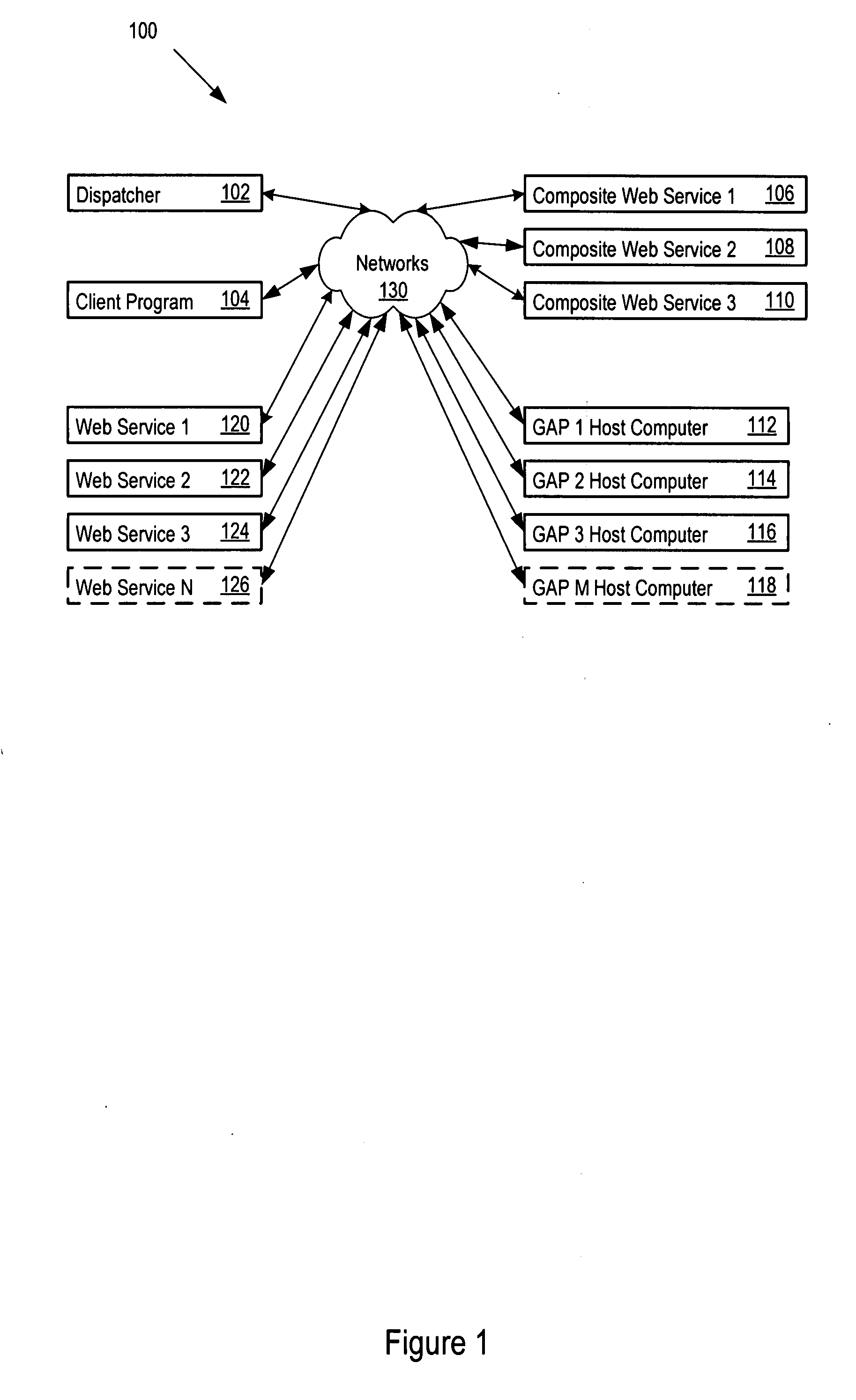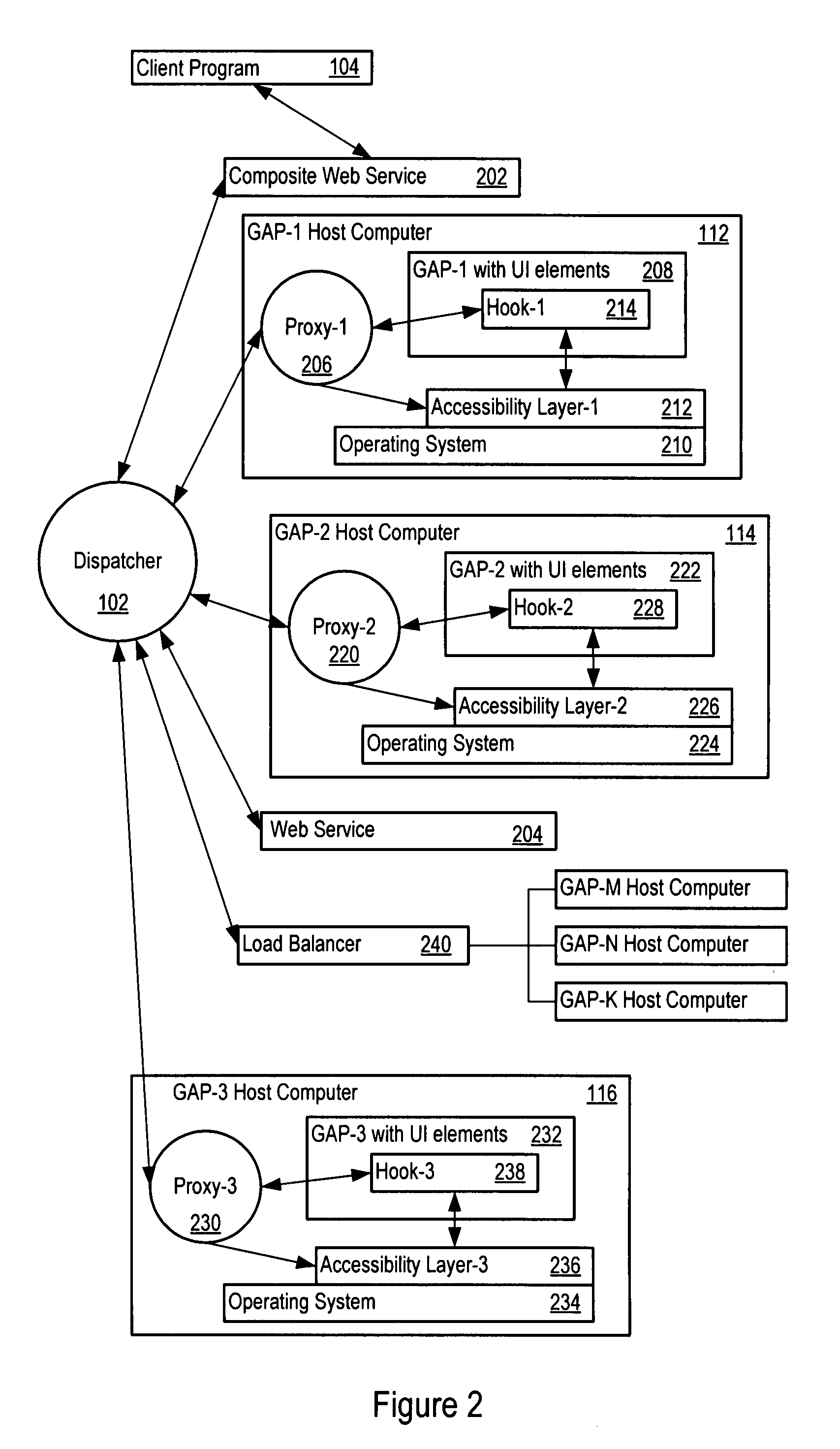GUI-based application to web services conversion system
a conversion system and application technology, applied in the field of systems and methods for building graphical user interface application (gap) based integrated systems, can solve the problems of system integrators finding enabling gaps to interoperate difficult, difficult and enormously expensive building integrated applications, and retrofitting existing gaps to achieve interoperability. , to achieve the effect of improving business processes and extending the usability of legacy gap systems
- Summary
- Abstract
- Description
- Claims
- Application Information
AI Technical Summary
Benefits of technology
Problems solved by technology
Method used
Image
Examples
Embodiment Construction
[0032]The Composer of Integrated Systems (Coins) addresses the technical challenge of enabling GAPs to exchange information (i.e., interoperate) with each other and web services over the Internet, and solves the technical problem of composing integrated systems using GAPS and web services, efficiently and non-invasively. Coins allows users to create composite web services from multiple GAPS and web services. Coins identifies and registers multiple GAPS, as a result of the Coins capturing, through the accessibility layer (i.e., accessibility API), information regarding GAPs and user interface (UI) elements of the GAPS. Coins registers GAPs and web services using a design tool user interface to capture user interface interaction specifications that create user interface element correspondence between a UI element of one GAP and a different UI element in a different GAP. Coins defines a web service parameter relationship between a web service parameter and one or more UI elements of a ...
PUM
 Login to View More
Login to View More Abstract
Description
Claims
Application Information
 Login to View More
Login to View More - R&D
- Intellectual Property
- Life Sciences
- Materials
- Tech Scout
- Unparalleled Data Quality
- Higher Quality Content
- 60% Fewer Hallucinations
Browse by: Latest US Patents, China's latest patents, Technical Efficacy Thesaurus, Application Domain, Technology Topic, Popular Technical Reports.
© 2025 PatSnap. All rights reserved.Legal|Privacy policy|Modern Slavery Act Transparency Statement|Sitemap|About US| Contact US: help@patsnap.com



